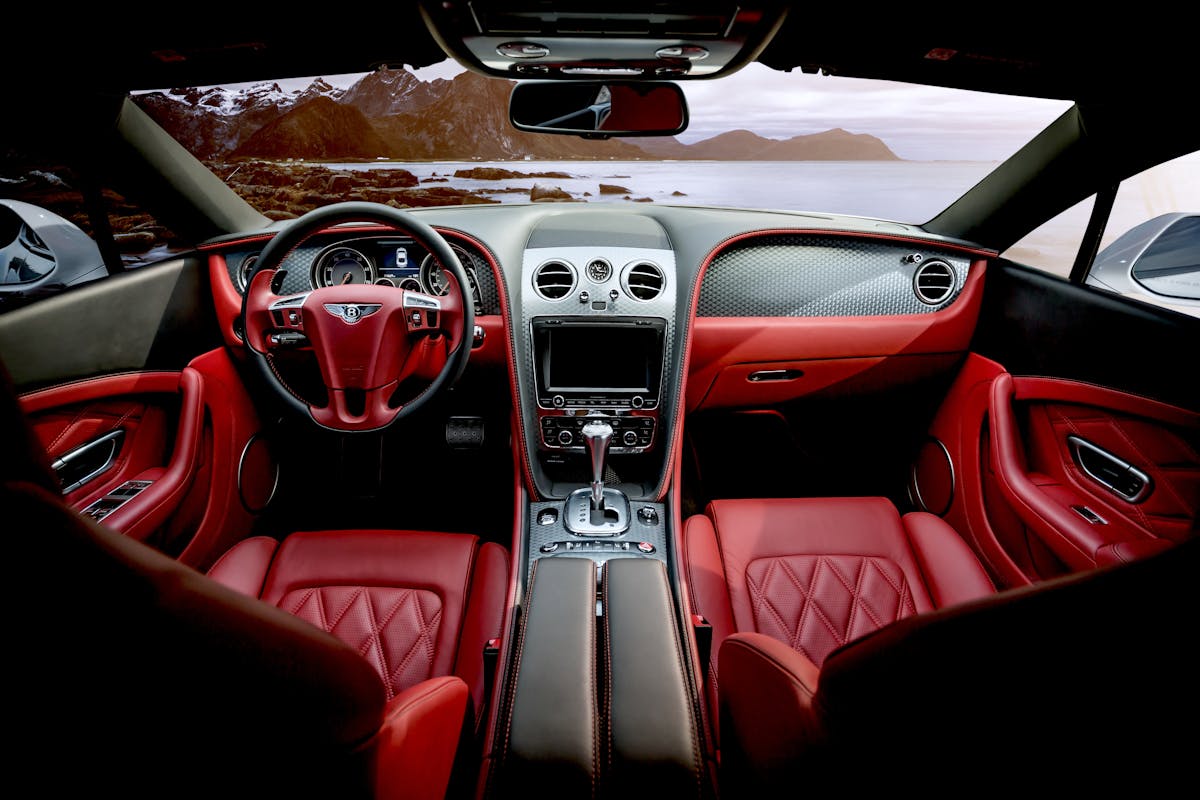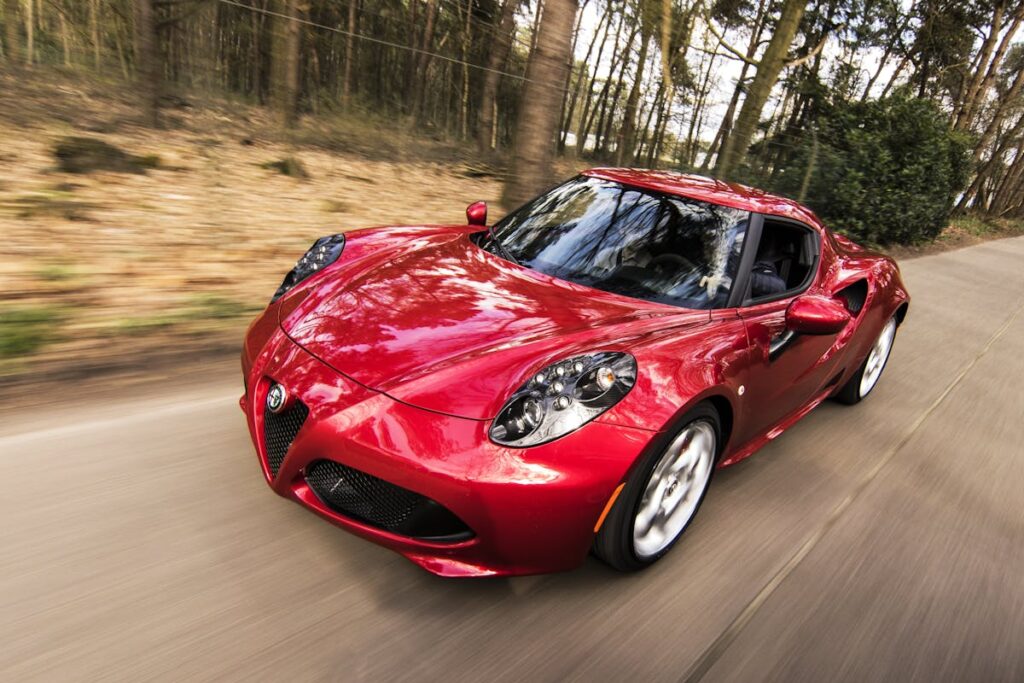The interplay between car accidents and the evolution of automobile frame structures and designs is a compelling narrative, reflecting the continuous push for innovation in pursuit of safety. Early designs, while aesthetically pleasing, often compromised occupant protection – a flaw that was exposed by the rising toll of vehicular accidents. Over time, tragic incidents and public outcry forced a shift in priorities, leading to breakthroughs such as crumple zones and more flexible frames. This conversation, however, does not end here; the question that arises, then, is how have these changes impacted the overall safety of modern vehicles?
Early Automobile Designs and Safety
Although early automobiles were revolutionary regarding transportation, they had significant safety flaws, particularly concerning their frame designs. In the early stages of automobile history, the focus was mainly on functionality, often at the expense of safety. The initial designs consisted primarily of a carriage body atop an internal combustion engine, with little to no consideration for passenger protection in the event of a collision.
These early automobiles lacked the structural integrity to resist the force of impact, making accidents potentially fatal. The concept of crumple zones, which help absorb the energy of a crash, was non-existent. The frames were rigid, transferring a high percentage of the crash energy directly to the occupants. Additionally, safety regulations were not yet formulated, creating an environment of trial and error in design.
The fragility of these initial designs prompted the industry to look into improving the safety features of vehicles, particularly the frame structure. The need for safer cars led to the development and introduction of safety regulations and standards. This marked a significant change in automobile history, where safety started to become an integral part of vehicle design, ultimately leading to the safer vehicles we see on our roads today.
Pivotal Accidents in Auto History
Several pivotal accidents have profoundly shaped auto history, leading to essential changes in car frame designs. Among the most significant is the infamous Ford Pinto case of the 1970s. Ford Pinto, with its faulty fuel system design, was prone to burst into flames upon rear-end collision, resulting in numerous fatalities. The public outcry and subsequent lawsuits led to a significant shift in the automotive industry’s attitude towards safety.
In contrast, Volvo’s safety-first approach has played a significant role in setting new industry standards. Volvo’s invention of the three-point seatbelt in 1959, following a series of accidents, was a groundbreaking achievement. Despite the opportunity for exclusive profit, Volvo opened the patent, prioritizing public safety over commercial gain. This selfless act has saved countless lives and underscored the importance of safety in car design.
These incidents have highlighted the need for thorough crash testing and meticulous attention to safety. They have pushed for the implementation of stringent safety standards and the development of advanced safety technologies. As a result, modern vehicles are engineered to absorb impact, protect occupants and even prevent accidents, signifying the profound impact of these pivotal accidents on car frame designs.
Evolution of Car Frame Structures
The evolution of car frame structures has been greatly influenced by both early designs and subsequent accidents. Initial frame designs, often simplistic and lacking robust safety features, were susceptible to structural failure during accidents, leading to severe consequences. However, these incidents paved the way for modern enhancements, resulting in car frames capable of better withstanding collisions and protecting occupants.
Early Car Frame Designs
In the domain of automotive history, early car frame designs played an essential role in shaping the safety and functionality of vehicles. Initial designs were primarily based on the carriage model, with vintage materials such as steel and wood being prominently used. The primary focus was on aesthetic appeal and basic functionality, with safety often being an afterthought.
These early frames, while visually appealing, lacked the necessary frame rigidity to protect occupants during incidents of high impact. Their structures were primarily composed of straight lines and angles, adding to the aesthetic appeal but compromising on durability and strength. The absence of crumple zones meant that the force of a collision was transferred directly to the vehicle occupants, leading to greater risk of injury.
The materials used, primarily steel and wood, also presented issues. While steel offered better rigidity than wood, it was also more prone to rust and corrosion. Wood, on the other hand, was more susceptible to rot and damage from the elements. These issues, along with the lack of safety features in early car frame designs, led to an urgent need for change and improvement in the automotive industry.
Impact of Accidents
How did the high incidence of car accidents influence the evolution of car frame structures? The answer lies in the intertwined relationship between accident frequency and car design evolution. Early automobile designs, with their rigid structures and minimal safety features, resulted in a high rate of serious injuries. This stark reality fueled significant developments in the automobile industry, especially in the context of car frame structures, aiming for injury prevention.
The increasing accident frequency served as an impetus for change, prompting car manufacturers to scrutinize the structural design of vehicles. The analysis revealed that the rigid frame, although providing stability, transferred the impact of a collision directly to the occupants. This led to a shift from rigid to crumple zone structures, designed to absorb and dissipate impact energy, thereby reducing the forces transmitted to the vehicle occupants.
Furthermore, advancements in materials science contributed to the evolution of car frame structures. The development and incorporation of high-strength steel and other composite materials offered enhanced structural integrity, without compromising on weight or fuel efficiency. The purpose was to strike a balance between durability and safety, shaping the evolution of car frame structures with a focus on accident survivability.

Modern Safety Enhancements
While earlier car frame designs were dictated primarily by factors of stability and durability, the modern era has seen a marked shift towards prioritizing safety enhancements. In this movement, active safety features and passive safety systems have emerged as critical components of automotive engineering.
Active safety features are designed to prevent accidents from occurring. These incorporate systems such as Electronic Stability Control (ESC), Anti-lock Braking Systems (ABS), and Advanced Driver Assistance Systems (ADAS) that include components like automatic braking and lane-keeping assist. These technologies actively monitor and adjust the vehicle’s operations to mitigate the risk of accidents.
On the other hand, passive safety systems aim to minimize injury during a collision. These include improvements to the car frame structures such as crumple zones, which are designed to absorb impact energy and divert it away from the passenger compartment. The integration of high-strength steel and reinforced materials in modern car frames has led to vehicles that offer enhanced protection in the event of a crash.
The evolution of car frame structures, driven by the imperatives of safety enhancements, represents a significant stride in automobile design and engineering. These advancements continue to redefine the relationship between vehicle design, safety, and human life.
Impact of Crumple Zones
The role of crumple zones within the context of car frame designs is of paramount importance in enhancing vehicle safety. We will first evaluate the fundamental concept and design of crumple zones, followed by an exploration of the critical engineering innovations that have led to their widespread implementation in modern vehicles. Finally, the influence of legislative measures on the incorporation of crumple zones in automobile manufacturing will be analyzed, emphasizing their significance in accident mitigation.
Understanding Crumple Zones
In vehicular design, one cannot overlook the significance of crumple zones. This structural feature is purposefully engineered into modern cars to absorb kinetic energy during a collision, thereby reducing the impact force experienced by the vehicle’s occupants.
Crumple zone functionality is attained through the use of materials and geometrical design that allow the car’s structure to deform in a controlled way upon impact. Typically positioned at the front and rear of the vehicle, these zones are designed to crumple and fold in a precise manner, absorbing the energy of the collision and keeping it away from the passenger compartment.
Crumple zone effectiveness can be measured by the extent to which they reduce occupant injury during collisions. Studies have shown that crumple zones can greatly decrease the risk of fatal injuries in high-speed crashes. Additionally, they help to distribute the crash force more evenly across the vehicle, reducing the chance of a concentrated impact causing catastrophic damage.
Engineering Safety Innovations
Pioneering advancements in vehicular safety, crumple zones represent a significant development in automobile engineering. Crumple zones are designed intentionally to deform during a collision, thereby absorbing the energy of the impact and reducing the forces transmitted to the vehicle’s occupants. The effectiveness of this design is attributed to the principles of kinetic energy and momentum, which are fundamental to understanding crash dynamics.
These safety innovations are not accidental but are the product of rigorous engineering practices and standards. They are a reflection of the industry’s commitment to enhancing safety regulations, adhering to design standards, and reducing mortality rates in car accidents. They showcase how engineering ingenuity can adapt to meet the demands of safety regulations, and how these regulations, in turn, shape design standards.
The implementation of crumple zones has revolutionized the automobile industry, influencing car frame designs globally. It is a clear demonstration of how car accidents have led to changes in car frame structures and designs, prompting engineers to seek innovative solutions. By integrating crumple zones into their designs, engineers have made significant strides in reducing the damaging effects of vehicular accidents, thereby protecting lives.
Crumple Zones and Legislation
Building on the concept of crumple zones, their impact extends beyond mere physical design and has prompted significant legislative changes in the automobile industry. Crumple zones, designed to absorb and redistribute the force of impact in a collision, have revolutionized car safety. Their effectiveness lies in their ability to decrease the deceleration experienced by car occupants, thereby reducing the likelihood of injury.
Assessments of crumple zone effectiveness have been instrumental in shaping legislation. Lawmakers, recognizing the profound implications of crumple zones for passenger safety, have taken steps to mandate their inclusion in car designs. This act of legislative intervention has had far-reaching impacts, compelling manufacturers to reevaluate and reengineer their vehicle structures.
In addition to compelling design changes, legislation has also spurred innovation, driving the development of more advanced crumple zone technologies. Manufacturers, in response to these legislative impacts, have been pushed to explore new materials and designs that can enhance the effectiveness of crumple zones even further.
Incorporation of Safety Cages
The evolution of vehicle design has witnessed the significant incorporation of safety cages as a fundamental component in car frames. This integral safety architecture is engineered to safeguard occupants by maintaining the structural integrity of the passenger compartment during a collision. Safety cages, also known as safety cells or rollover protection systems, are designed to resist deformation and intrusion in the event of an accident.
Material selection plays a essential role in the construction of safety cages. High-strength steel is often employed due to its excellent deformation resistance properties, guaranteeing the cage maintains its shape under high-stress scenarios. The design process involves meticulous calculations of forces, stresses, and the load paths to guarantee maximum strength in key impact areas.
The positioning of the safety cage within a vehicle’s framework is also critical. The design is typically optimized to create a ‘survival space’ around the occupants, minimizing the potential for injury. The safety cage’s integration, along with other features like crumple zones, frame rails, and reinforced pillars, forms a all-encompassing safety architecture that enhances the vehicle’s overall structural integrity.
Each design modification aims to increase the probability of occupant survival and decrease the severity of injuries in the unfortunate event of a collision.
Role of Collision Tests in Design
In vehicle design, collision tests play an indispensable role in shaping the safety features of a car frame. The core purpose of these tests is to evaluate the collision performance of the car’s structure, enabling designers to make necessary adjustments for improved safety. The testing methodologies employed can greatly influence the final design and structure of the car frame.
The role of collision tests in design is multifaceted and includes:
- Identifying Weak Points: Testing reveals structural vulnerabilities that may not be evident in initial design stages.
- Frame Material Evaluation: Different materials behave differently upon impact. Tests help understand these responses, guiding material selection.
- Assessment of Passenger Safety: Collision tests help assess the potential injuries to occupants during a crash.
- Design Alterations: Test results foster design changes to enhance safety.
- Regulatory Compliance: Tests guarantee the design meets or exceeds safety standards set by regulatory bodies.
In essence, collision tests are pivotal in steering car frame design towards safety. They provide a practical insight into the vehicle’s performance under real-world conditions, hence influencing changes in design to optimise safety.
Modern Car Design Innovations
Advancements in technology have greatly influenced the domain of automobile design, offering innovative solutions to safety concerns previously identified through collision tests. Modern design innovations are an amalgam of safety optimization and environmental consciousness, integrating sustainable materials into car frames to reduce environmental impact without compromising safety.
The technical aspect of these new designs focuses on the car’s structure, specifically the frame. The use of high-strength steel and aluminum alloys has increased, their characteristics offering enhanced crash energy management. Composite materials, though pricier, are chosen for their exceptional strength-to-weight ratios, reducing overall vehicle weight and improving fuel efficiency. In addition, incorporating sustainable materials such as bioplastics and bio-fibers has gained traction, serving a dual purpose of promoting environmental sustainability and enhancing the vehicle’s safety features.
Another significant innovation is the emphasis on aerodynamic efficiency. Designers now place considerable importance on reducing air resistance, both to increase speed and decrease fuel consumption. Sleek, fluid designs diminish drag, improving the car’s handling and stability, especially at high speeds. This not only contributes to overall performance but, importantly, enhances safety by increasing vehicle control. Consequently, contemporary car designs reflect a balance of safety, performance, and sustainability.
Future Trends in Car Safety
Undeniably, the new wave of automobile safety innovation is on the horizon, fueled by rapid advancements in technology and an ever-evolving understanding of car crash dynamics. The future of car safety will be shaped by a variety of factors, most importantly the rise of autonomous vehicles and the use of advanced materials.
Key trends to watch out for include:
- Autonomous Vehicles: With the ability to make split-second decisions based on a multitude of sensor inputs, these vehicles promise reduced human error, one of the leading causes of car accidents.
- Advanced Materials: Utilization of high-strength steel alloys, carbon fiber composites, and other advanced materials will result in stronger, safer car frame structures.
- Active Safety Systems: Technologies such as automatic emergency braking, lane-keeping assist, and blind-spot detection will become more common.
- Vehicle-to-Vehicle Communication: Cars will communicate with each other to prevent collisions, taking safety beyond the individual vehicle level.
- Biometric Monitoring: Vehicles may monitor driver health metrics like heart rate or eye movement to detect fatigue or illness, prompting smart safety measures.
As these trends advance, the goal remains consistent: to minimize the risk of accidents and enhance the safety of all road users.
Frequently Asked Questions
How Are Car Accident Statistics Used to Influence Car Safety Design?
Accident data is meticulously analyzed by automobile engineers to develop safety innovations. This data-driven approach guarantees designs are enhanced to mitigate risks, thereby improving overall vehicle safety and reducing the severity of accident impacts.
Who Is Responsible for Enforcing Safety Regulations in Vehicle Manufacturing?
Regulatory agencies, such as the National Highway Traffic Safety Administration (NHTSA) in the US, are responsible for enforcing safety regulations in vehicle manufacturing, utilizing various enforcement mechanisms to guarantee compliance with established standards.
How Does the Weight of a Car Affect Its Safety in a Crash?
Vehicle mass greatly influences crash dynamics. Higher mass often reduces deformation, enhancing passenger safety in collisions. However, it also increases inertia, potentially intensifying impacts. As a result, weight distribution and balance are essential in vehicle design for ideal safety.
What Are Some Examples of Safety Features Being Prioritized Over Aesthetics in Design?
Design prioritizing safety over aesthetics is evident in features like crumple zones and safety cages. Crumple zones absorb impact, reducing passenger injuries, while safety cages preserve the survival space during a collision.
Are There Significant Differences in Safety Standards Between Countries?
Yes, safety standards in vehicles greatly vary internationally due to regulatory differences. These variations impact the implementation of safety features, leading to discrepancies in car frame structures and designs across different countries.

